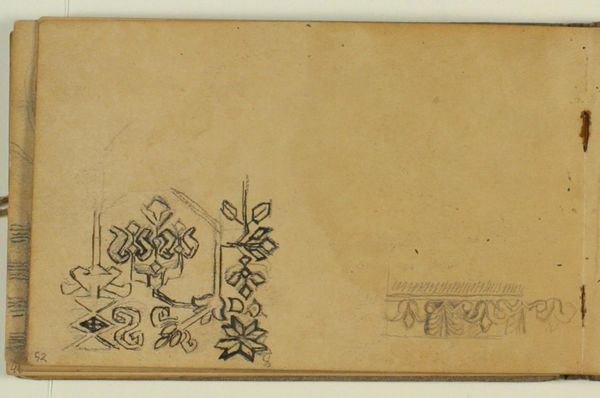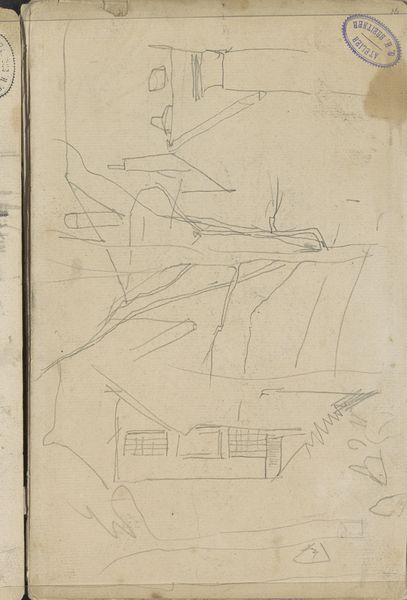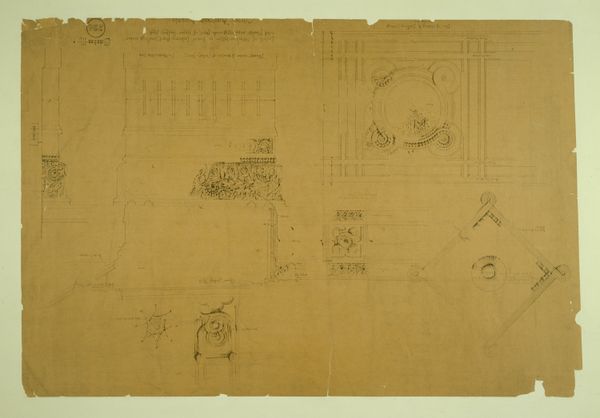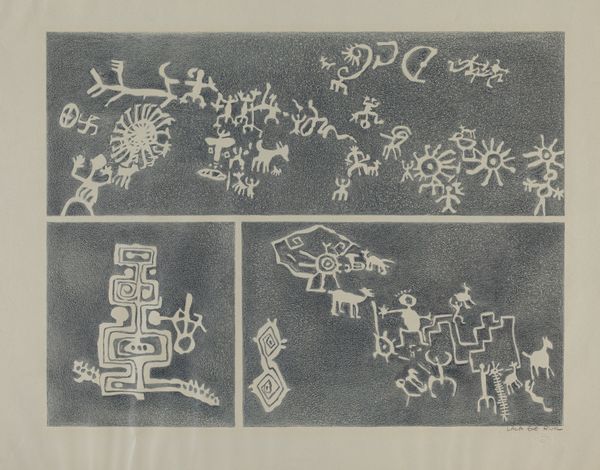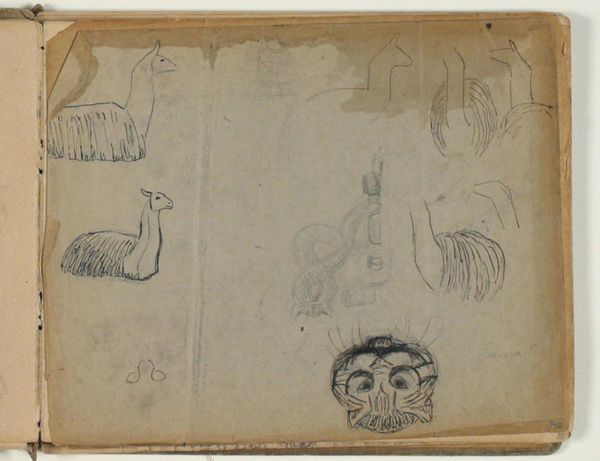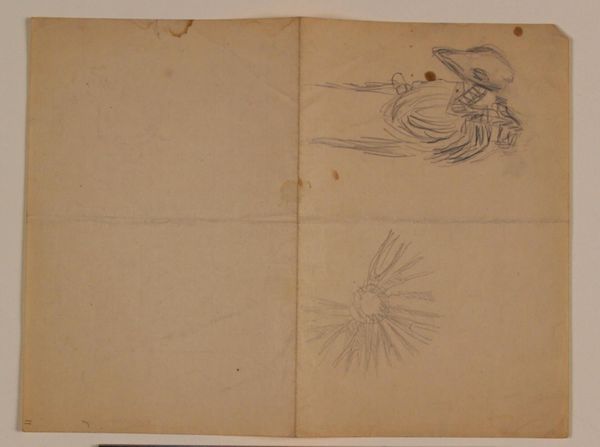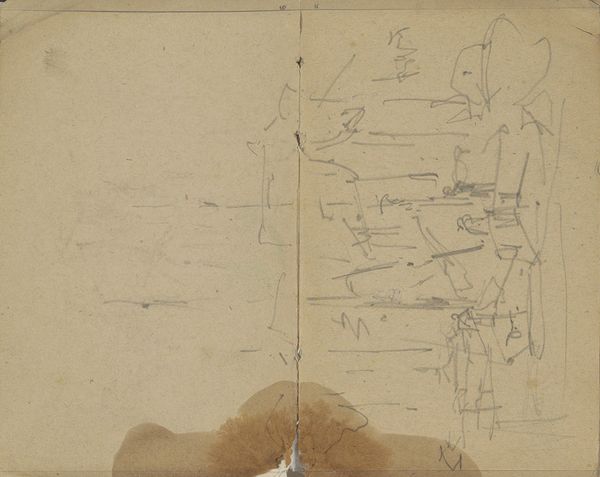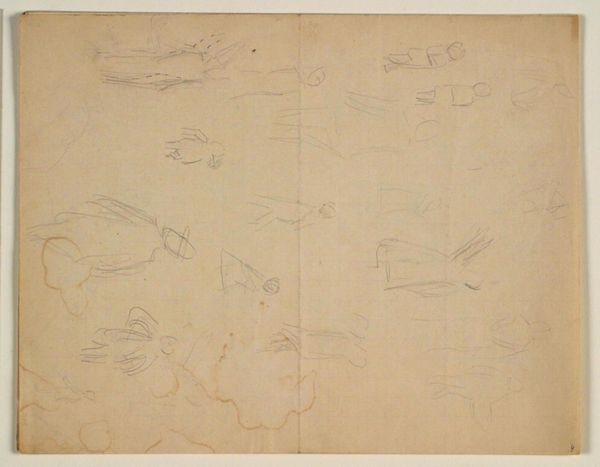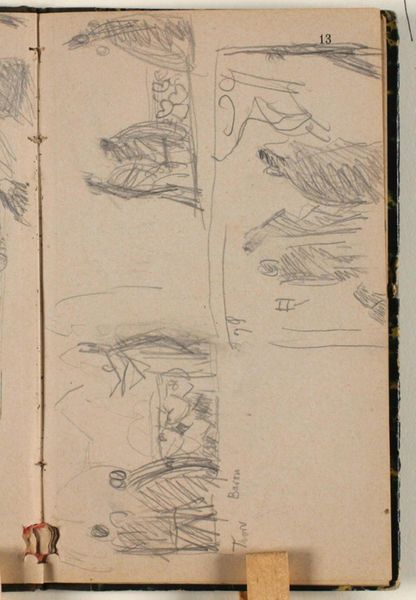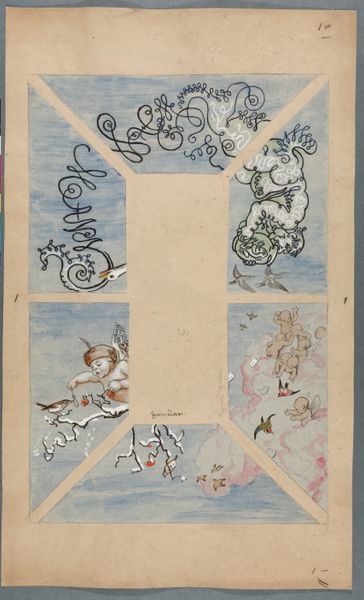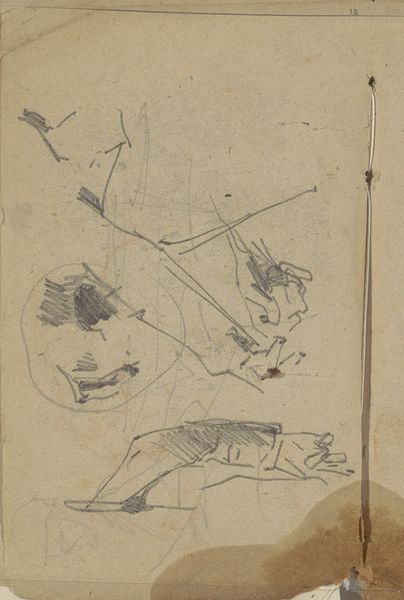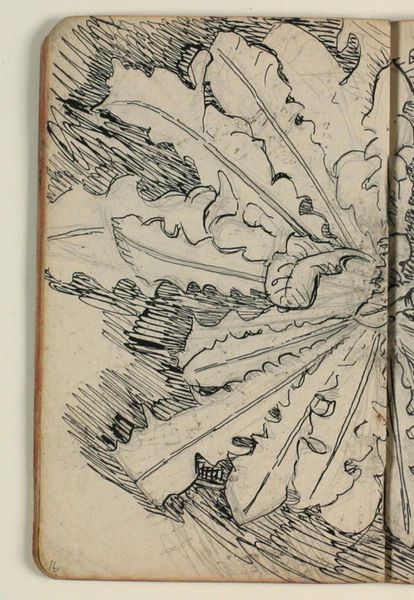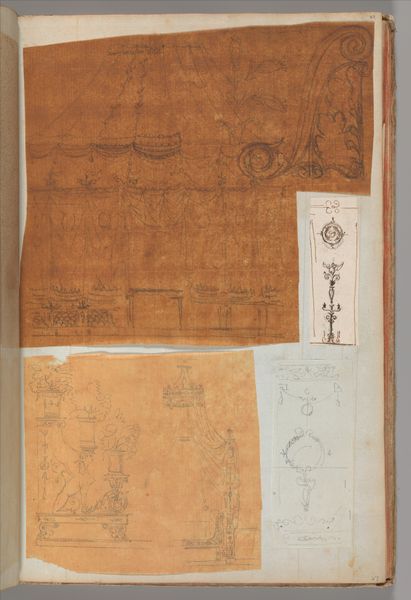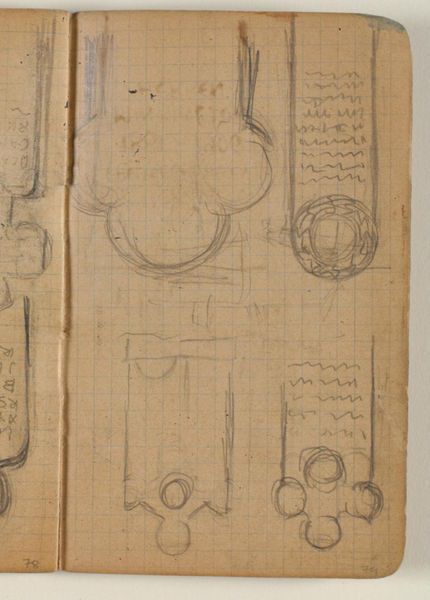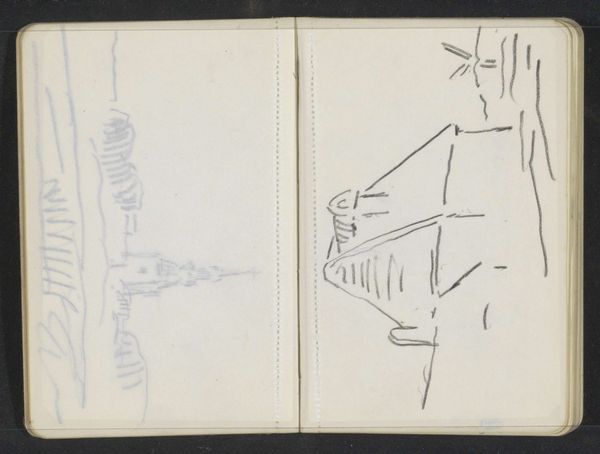
Contemporary Kosode Patterns (Tōsei hinagata) 1677
0:00
0:00
drawing, print, paper, ink, woodcut
#
drawing
#
narrative-art
# print
#
book
#
asian-art
#
ukiyo-e
#
figuration
#
paper
#
ink
#
woodcut
#
line
#
decorative-art
Dimensions: 10 11/16 × 7 1/2 in. (27.2 × 19 cm)
Copyright: Public Domain
Curator: Here we have a page from "Contemporary Kosode Patterns" ("Tōsei hinagata"), a woodblock print book created by Hishikawa Moronobu in 1677. It's currently held in the collection of the Metropolitan Museum of Art. Editor: My first thought? This feels…playful. Even with the simple monochrome lines. It’s almost like peering into a closet full of stories. Each kimono is a blank canvas ready to come to life, like a theater stage. Curator: Indeed. Moronobu was a pivotal figure in the development of Ukiyo-e, and this work exemplifies the style. Notice the deliberate composition. The layout showcases different kosode designs with great attention to linearity. The abstract shapes are very striking, aren’t they? Editor: Absolutely! The birds caught in flight, they give that design movement. It’s almost musical—the spacing, the rhythm. I find myself thinking, "What story would I spin if I wore that?" Curator: Precisely! This was a pattern book, intended to showcase the latest trends in kimono design. In a way, Moronobu isn't just showing us clothing. The book captures the spirit of Edo-period fashion and its significance to social life. Each pattern would resonate differently within the highly codified social structure of the time. Editor: Right! Fashion as narrative. Look at that other design...lanterns and those tasseled ornaments. Those evoke festival nights and secret rendezvous! I imagine ladies selecting patterns not just for beauty, but for what the design proclaimed about them. Maybe something of their hopes and dreams. Curator: Well said. The patterns chosen reflected social status, personal taste, even fleeting desires. It is also worth noticing that while some compositions employ motifs aligned with existing class symbols, others explore unconventional forms which point to rising trends and subversive gestures. Editor: Makes you wonder who wore these designs, what they whispered to each other as they admired themselves in the mirror... or the glances they stole across a crowded room, a silent language on silk. I'd love to walk down a street with women dressed in them! Curator: What a compelling suggestion. It invites us to think about how clothing participates in structuring and changing identities. Looking closely helps unlock these histories. Editor: For sure. It reminds us that even what appears simple holds untold tales of creativity and human connection.
Comments
No comments
Be the first to comment and join the conversation on the ultimate creative platform.
